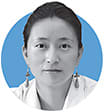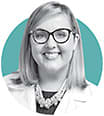WELCOME TO THE REFRACTION ISSUE
Compiled here are practical tips from a few of the articles that appear in this issue of Optometric Management.



USE THE RIGHT TESTS TO MAKE A TIMELY MYOPIA DIAGNOSIS
 It is crucial to use clearly defined, easy-to-perform tests to identify children at a high risk of myopia, writes Maria Liu, OD, PhD, MPH. Uncorrected distance visual acuity, autorefraction combined with auto-keratometry, and axial length measurements, performed six months apart, can be considered an efficient battery of tests for the early detection of the premyopic, accelerated AL growth, as well as myopia onset, she writes.
It is crucial to use clearly defined, easy-to-perform tests to identify children at a high risk of myopia, writes Maria Liu, OD, PhD, MPH. Uncorrected distance visual acuity, autorefraction combined with auto-keratometry, and axial length measurements, performed six months apart, can be considered an efficient battery of tests for the early detection of the premyopic, accelerated AL growth, as well as myopia onset, she writes.
"Myopia management: Evidence-based approaches"

PREPARE PATIENTS FOR PRESBYOPIA
 It’s important to talk to patients about presbyopia as early as possible – Timothy Earley, OD, likes to start the conversation with his patients when they are in their late 30s, or sooner if they perform jobs that involve heavy use of electronic screens. An important point is to let patients know what lies ahead, but not present the possibility of presbyopia as a catastrophe.
It’s important to talk to patients about presbyopia as early as possible – Timothy Earley, OD, likes to start the conversation with his patients when they are in their late 30s, or sooner if they perform jobs that involve heavy use of electronic screens. An important point is to let patients know what lies ahead, but not present the possibility of presbyopia as a catastrophe.
"Satisfy the needs of plano presbyopes"

ALWAYS DISCUSS CONTACT LENSES WITH YOUNGER HYPEROPIA PATIENTS
 When treating children who have hyperopia, always stress the importance of visual efficiency and comfort vs. clarity, writes Pamela Lowe, OD, FAAO, Dipl. ABO. Because most young hyperopes can easily accommodate to see clearly, there is a common misconception by the patient and parents that “everything is fine.”
When treating children who have hyperopia, always stress the importance of visual efficiency and comfort vs. clarity, writes Pamela Lowe, OD, FAAO, Dipl. ABO. Because most young hyperopes can easily accommodate to see clearly, there is a common misconception by the patient and parents that “everything is fine.”
"Creating happier hyperopes"


FIND LOCAL COLLABORATORS FOR CONCUSSION PATIENTS
 Patrick T. Quaid, MCOPTOM, FCOVD, PhD, and Brendan Mooney, CAT(C) write that, when treating patients with concussions, ODs should reach out to primary care doctors, sports medicine doctors, and nurse practitioners to learn the best treatment approaches for such patients.
Patrick T. Quaid, MCOPTOM, FCOVD, PhD, and Brendan Mooney, CAT(C) write that, when treating patients with concussions, ODs should reach out to primary care doctors, sports medicine doctors, and nurse practitioners to learn the best treatment approaches for such patients.
"Collaborate on concussion management"

USE “STAY INTERVIEWS” TO PREVENT EMPLOYEE TURNOVER
 If you feel your staff is unhappy with their current work environment, you can use “stay interviews” to gather feedback, writes Jessilin Quint, OD, MBA, MS, FAAO, in this month’s “Optical” column. A stay interview is similar to an exit interview, save that its performed with employees still working at the practice. Sample questions include “What do you look forward to most about work?” and “What situation has made you think of leaving?”
If you feel your staff is unhappy with their current work environment, you can use “stay interviews” to gather feedback, writes Jessilin Quint, OD, MBA, MS, FAAO, in this month’s “Optical” column. A stay interview is similar to an exit interview, save that its performed with employees still working at the practice. Sample questions include “What do you look forward to most about work?” and “What situation has made you think of leaving?”
"Use the power of stay interviews"



